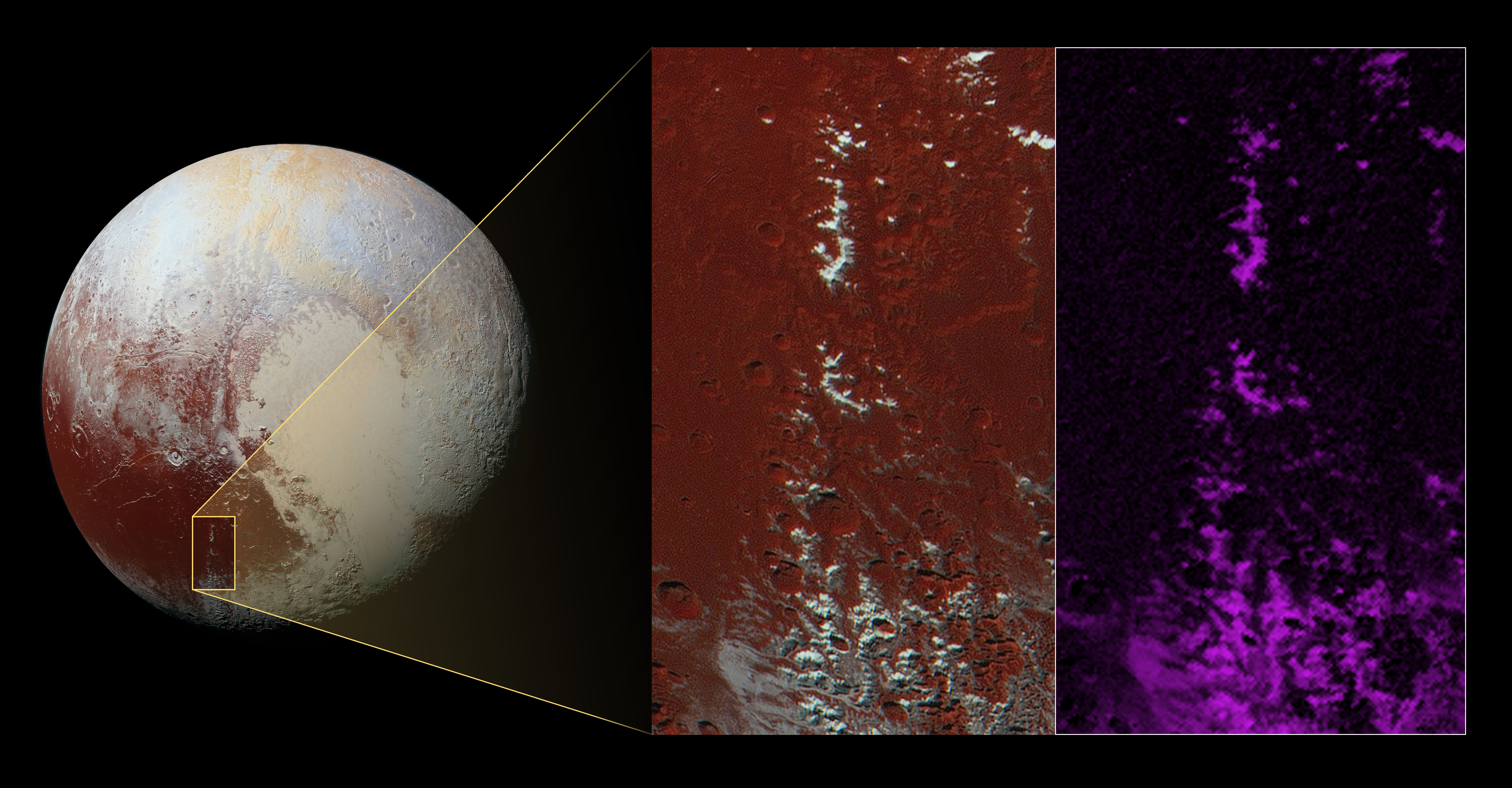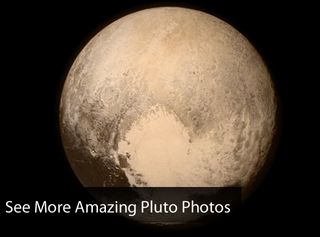
Some of Pluto's frigid peaks are capped by ice, but it's more exotic than the frozen stuff we're used to here on Earth.
A newly released image captured by NASA's New Horizons spacecraft during its historic Pluto flyby in July 2015 shows bright material atop the tallest mountains in a 260-mile-long (420 kilometers) chain in the southeastern part of Cthulhu, a dark-red region that's bigger than the state of Alaska.
Compositional measurements made by New Horizons' Ralph/Multispectral Visible Imaging Camera suggest that the stuff is methane ice, researchers said.
"That this material coats only the upper slopes of the peaks suggests methane ice may act like water in Earth's atmosphere, condensing as frost at high altitude," New Horizons science team member John Stansberry, of the Space Telescope Science Institute in Baltimore, said in a statement.

Pluto's mountains themselves — some of which are about 2 miles (3.2 km) tall, rivaling the United States' Rocky Mountains in height — are probably made of water ice, the material that makes up the "bedrock" on the dwarf planet, New Horizons team members have said.
New Horizons' July 14 flyby, which took the spacecraft within just 7,800 miles (12,550 km) of Pluto's surface, revealed the dwarf planet to be a complex world with surprisingly diverse landscapes. For example, in addition to the towering mountains, Pluto hosts a vast nitrogen-ice plain known as Sputnik Planum, which lacks any detectable craters.
Sputnik Planum's unblemished surface indicates that the region was resurfaced very recently, which in turn suggests that Pluto harbors an internal energy source (which drives the resurfacing). What that energy source may be remains a mystery.
Get the Space.com Newsletter
Breaking space news, the latest updates on rocket launches, skywatching events and more!
The Cthulhu area probably owes its red hue to the presence of tholins, complex organic molecules that form when methane is exposed to galactic cosmic rays and ultraviolet radiation from the sun.
New Horizons captured the recently released image at a distance of 21,100 miles (33,900 km) from Pluto, about 45 minutes before the probe made its closest approach to the dwarf planet, NASA officials said.
Follow Mike Wall on Twitter @michaeldwall and Google+. Follow us @Spacedotcom, Facebook or Google+. Originally published on Space.com.
Join our Space Forums to keep talking space on the latest missions, night sky and more! And if you have a news tip, correction or comment, let us know at: community@space.com.

Michael Wall is a Senior Space Writer with Space.com and joined the team in 2010. He primarily covers exoplanets, spaceflight and military space, but has been known to dabble in the space art beat. His book about the search for alien life, "Out There," was published on Nov. 13, 2018. Before becoming a science writer, Michael worked as a herpetologist and wildlife biologist. He has a Ph.D. in evolutionary biology from the University of Sydney, Australia, a bachelor's degree from the University of Arizona, and a graduate certificate in science writing from the University of California, Santa Cruz. To find out what his latest project is, you can follow Michael on Twitter.